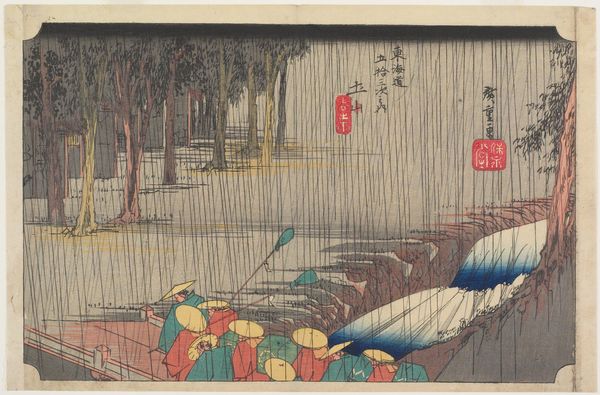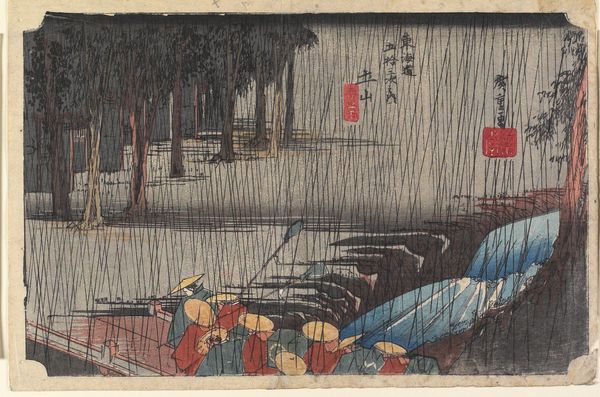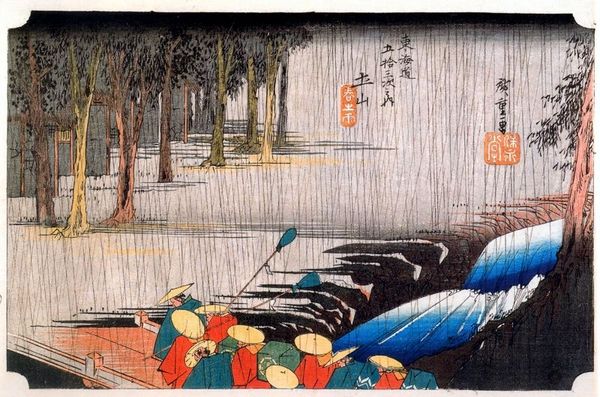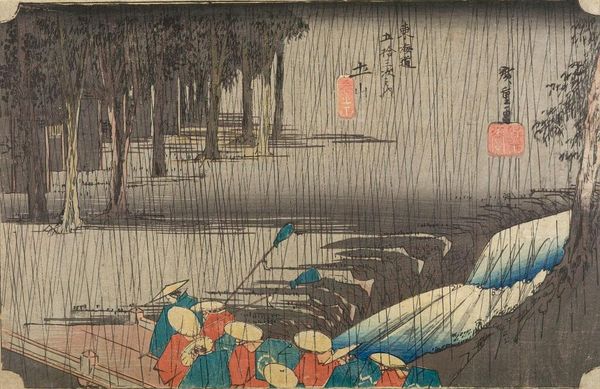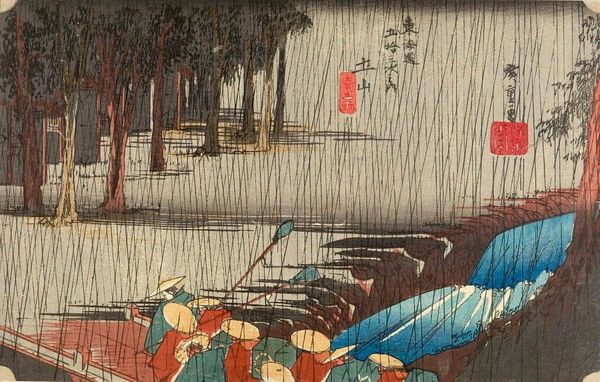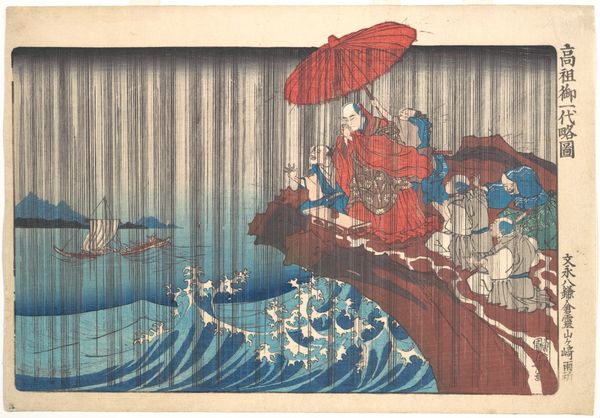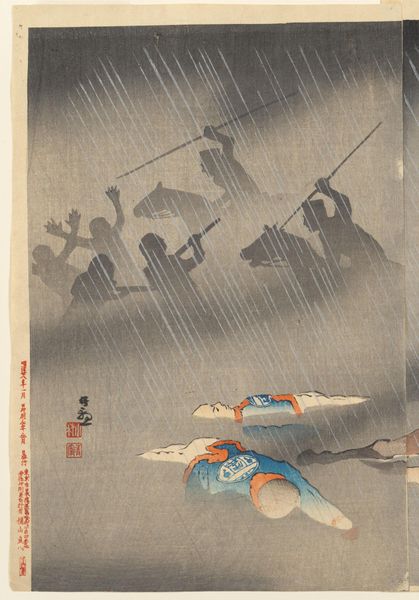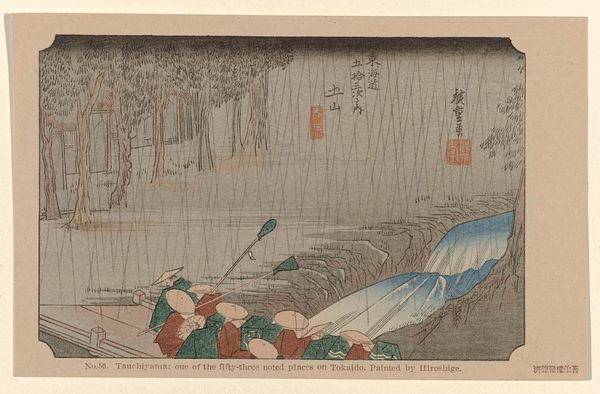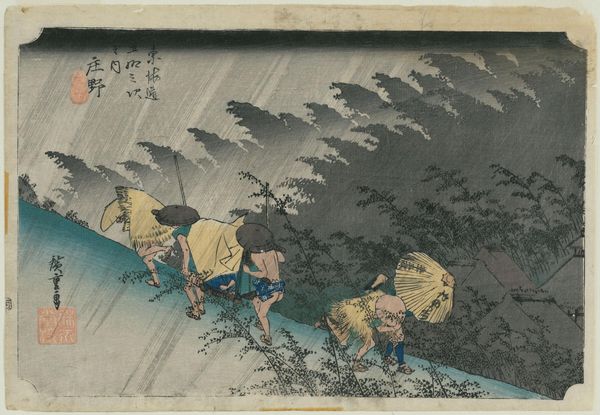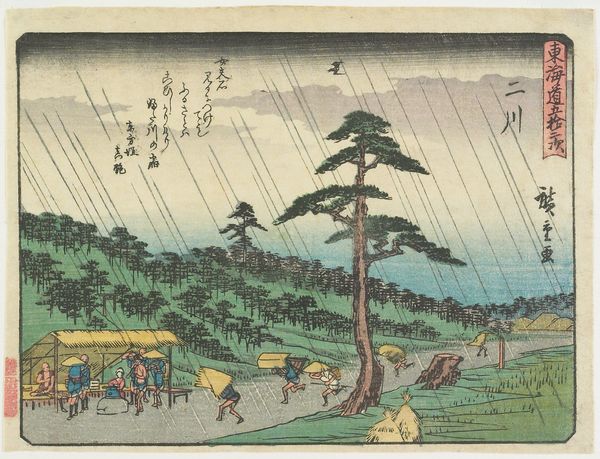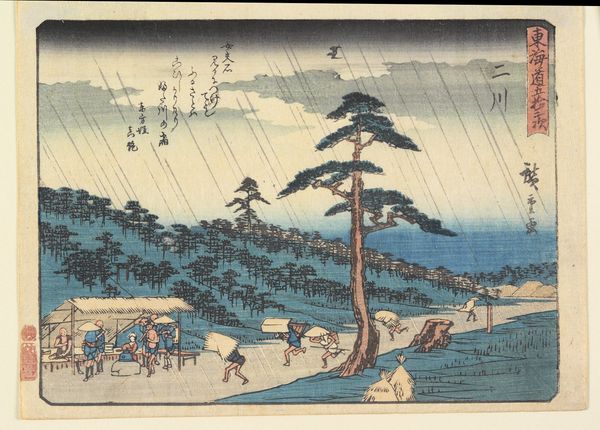
print, ink, woodblock-print
#
narrative-art
# print
#
landscape
#
ukiyo-e
#
japan
#
figuration
#
ink
#
woodblock-print
Dimensions: 8 7/8 × 12 7/8 in. (22.5 × 32.7 cm) (image, sheet, horizontal ōban)
Copyright: Public Domain
Curator: This is Utagawa Hiroshige's "Tsuchiyama," a woodblock print made around 1832-1833, now residing here at the Minneapolis Institute of Art. Editor: The sheer intensity of the rain grabs you first, doesn’t it? Vertical lines blurring the whole scene, creating an almost claustrophobic sensation. Curator: Absolutely. Hiroshige masterfully captures the experience of traveling through a downpour. The "ukiyo-e," or "pictures of the floating world," tradition often romanticized landscapes, but this feels more visceral, immediate. Look how the figures huddle together on that little bridge, a stream swollen, trying to just brave it out in the rain. Editor: And those figures, anonymous under their hats and capes – they speak to the universality of the traveling experience. Who are they, really? Where are they headed and what hierarchies or labor conditions are visible in this scene. They embody a certain precarity but they're traversing space and participating in commerce. The relentless rain is almost a metaphor for forces beyond their control, the socio-economic climate they move within, wouldn't you agree? Curator: It could be. For me it evokes something so simple as melancholy. We all know the sense of loneliness amidst a crowd. It's also interesting that the artist included this red-colored building barely discernible through the veil of rain, to convey a welcoming refuge from the unrelenting weather conditions or simply another checkpoint within this carefully crafted journey. Editor: Precisely! The strategic inclusion of such architectural elements is telling. This work highlights how landscape prints like this often promoted political agenda, framing the infrastructure investments and state surveillance along popular trade routes. We might also analyze those travelers in terms of race and gender: in particular, the gendered expectations regarding domestic duties, labor division, and spatial movement in traditional Edo period Japanese culture. Curator: That's a powerful reading. For me it’s more instinctive. Like standing in the rain myself. Feeling its weight. That sense of… displacement. And for a brief moment I’m as one with these obscured travelers making my way on the road between destinations, not knowing what awaits me ahead. Editor: Well, maybe art is less about what's out there and more what it makes you experience inside... Curator: Indeed. And thanks to the artist this print makes us travel together to see how deeply rain makes us think about ourselves, time and history.
Comments
No comments
Be the first to comment and join the conversation on the ultimate creative platform.
